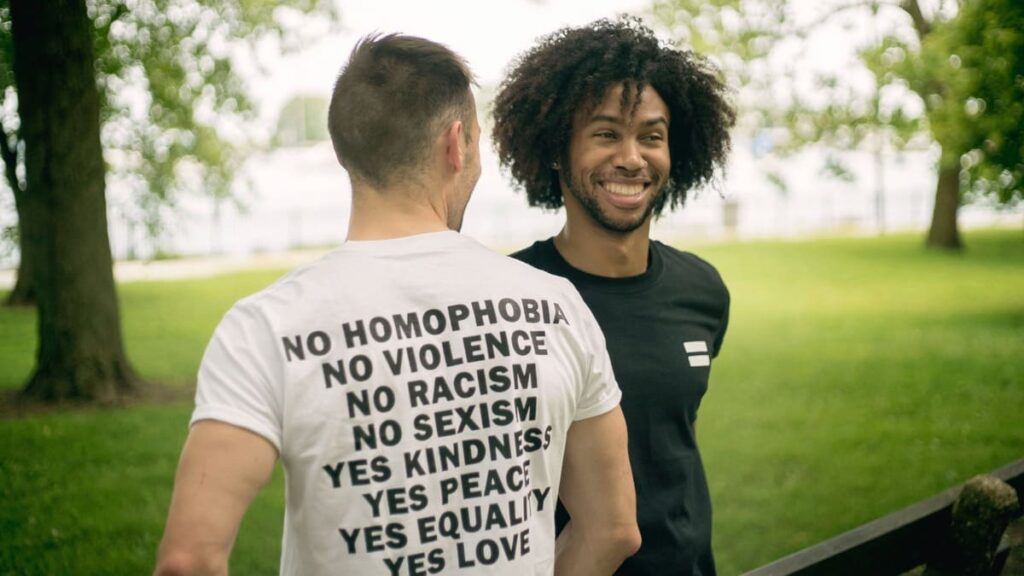- Is Performative Inclusion Hurting Your Talent Pipeline? - December 9, 2025
- Is The Lack of Career Growth Losing You Valuable Hires? - November 20, 2025
- Innovative Resume Ideas to Help You Stand Out - May 8, 2025
Stereotypes in the workplace are often inevitable when people from diverse backgrounds and mindsets come together to meet organizational goals. As a result, you might find employees working in silos or restricting themselves to cliques of like-minded team members. That’s why it’s necessary to understand how to overcome stereotypes at work.
You could trace the origin of stereotypes from the humble beginnings of socialization, where early humans sought refuge from the wild by swiftly identifying like-minded allies. But, these inherent behaviors have become obsolete and counterproductive as people with varied experiences collaborate to succeed in the modern workforce.
What are Organizational Stereotypes?

Organizational behavior stereotyping is when people make generalizations about someone that are often not true, just based on who they are. For instance, it can happen when a good job applicant is rejected just because of their gender. It can also be when someone is not given a promotion because of their age.
Organizational stereotypes may include:
- Ageism
- Ableism
- Cultural differences
- Gender inequalities
- Religion
- Political views
- Sexual orientation
If stereotypes are not dealt with quickly at work, they can get worse and cause problems like prejudice, distrust, and conflict among team members. So, this negative work culture from stereotypes could end up hurting your company’s professional image. And it can also make a lot of employees unhappy, leading to many people leaving the company.
Organizational stereotypes can also exist at the leadership level and impair critical decision-making processes.
These leadership problems can mess up the way people work together, hire new talent, and keep employees engaged. So, it’s crucial to actively find and get rid of harmful stereotypes across the whole organization to make communication and teamwork better.
here we’ll share 7 effective ways of overcoming stereotypes at work to create a supportive landscape of opportunity. These tips help empower team members to focus on thriving in their careers regardless of their background.
Tip #1 – Promote Inclusivity Workshops And Programs to Overcome Stereotypes at Work
Overcoming stereotypes requires strong empathy among team members. To create a more understanding team, organize regular workshops and training about diversity and inclusion. So, these sessions can have activities like role-playing. You can also use real-life examples to improve how well the team gets along and understands each other.
So, get trainers who are certified to run awareness programs. They can help your employees notice and handle the small biases in their minds so they don’t stereotype others. Also, invite people from all levels and departments, like junior, mid-level, and senior staff, to these workshops. This way, empathy can be shared throughout the whole organization.
Companies can also encourage online learning that team members can use at their own speed. These digital lessons give handy review materials that employees can go over and share with others in the company to strengthen what they learned in workshops.
Tip #2 – Establish Clear Policies Against Workplace Discrimination to Overcome Stereotypes at Work
A good workplace policy needs to clearly explain how team members should behave and what happens if they don’t follow the rules. For instance, the policy could say how many warnings someone gets, how long they might be suspended, or the chance of being fired for acting in a way that’s not okay at work.
Put these rules in your employee handbook so people can easily find them. So, when new employees are starting, supervisors and managers can talk about these rules as part of their introduction. It’s also crucial to give employees clear instructions on the official procedures for reporting any discrimination they think might be happening at work.
Giving your employees the relevant reporting procedures early in their employment offers them a sense of trust, protection, and confidence in the organization. These measures also prevent employees from becoming silent sufferers of harassment due to a fear of retaliation or getting lost in the reporting procedure.
Tip #3 – Create Inclusive Communications to Overcome Stereotypes at Work

Open and inclusive workplace communication is critical for overcoming negative stereotypes in your company. An optimized and intentional communication strategy prevents misunderstanding and misinterpretations among team members to minimize negative behaviors such as stereotyping.
Making sure everyone feels safe to share their thoughts at work is important. So, your organization should encourage people to listen carefully in group meetings and other team situations.
Active listening means really focusing on what someone is saying and getting their perspective. So, this way of communicating helps team members respect each other more and makes individual responsibilities clearer. Inclusive communication can stop negative stereotypes from forming and also encourages feedback, which is a strong tool for making the organization better
Some proven active listening practices include:
- Maintaining eye contact with the speaker and engaging in the conversation without distractions.
- Asking questions regarding vague or complex topics.
- Avoid interrupting the speaker and letting them finish their point.
- Providing reactive verbal and non-verbal cues that indicate attention (e.g., nods and “uh huh” showing that you follow the conversation flow)
Tip #4 -Raise Awareness of Leadership Diversity to Overcome Stereotypes at Work
Having diverse leaders makes the work culture more inclusive and positive, and it stops negative stereotypes from happening. To start, make sure everyone has a fair chance for leadership development based on their skills and experience.
Industry leaders identify three key areas necessary for creating an inclusive landscape for inclusive leadership development:
1. Leadership – Preparing a diverse group of leaders for the future. So start by encouraging current decision-makers to show the way through their actions, values, and attitudes. In simple terms, they should set an example by taking DEI courses and using fair policies when evaluating leadership skills.
2. Environment – Encouraging a work culture where employees can share their thoughts and join in can make inclusive leadership better. So, employees should feel supported and have the freedom to speak up about work problems. And they should also be able to work well with leaders who have different styles.
3. Ownership – Companies can organize sessions to learn about different cultures, welcoming various viewpoints, and having champions for diversity from different communities. Thus, by giving good communication channels and being open to hearing from DEIB champions, talent development teams can understand leadership diversity concerns from a broader perspective.
Tip #5 – Maintain Fair Performance Evaluations to Overcome Stereotypes at Work
Being open about how you evaluate talent performance is important in getting rid of stereotypes. So, your team should use clear metrics that look at how well an employee does their job and contributes, focusing on their skills and efficiency at work. This way, you can avoid making assumptions and using biased practices.
Your organization should thoroughly vet performance appraisals for potential biases that could lead to negative stereotypes in employee experiences. Common performance assessment biases may include:
Halo/horns effect – A bias of how a particular trait can overshadow the entire character assessment and evaluation process. For instance, a manager might ignore a person’s bad performance because they’re funny. On the flip side, with the “horns effect,” leaders might always criticize or ignore an employee just because of one thing they don’t like about them.
Leniency bias – 45% of hiring and recruitment professionals admit to having leniency biases in how they assess employees. So, this means they tend to overestimate how well their employees are doing. Leaders might do this to avoid problems at work, but it leads to evaluations that aren’t accurate and keeps employees from getting the feedback they need to improve in their careers.
Central tendency bias – This bias makes managers give everyone kind of the same scores to avoid going to extremes (like saying someone is the best or the worst). It often happens in regular assessment methods, like using a Likert scale, where it’s easy for appraisers to pick ratings in the middle.
How to use feedback to improve
To make performance evaluations fairer and more accurate, your company can use 360-degree feedback. This means getting feedback from lots of different people like appraisers and stakeholders. So, it’s important to look at how an employee does over different times in their journey with the organization.
Having employees assess themselves can give your team a good understanding of their work experiences and how engaged they are. You can make these assessments short by using surveys that ask about their work relationships, stress levels, and professional goals. You can also use this to find out what they think about being part of the organization.
Combining regular employee self-evaluations with standard performance appraisals (e.g., annual reviews) can help overcome negative stereotypes and personalize talent strategies for workplace excellence.
Tip #6 – Celebrate Workplace Diversity to Overcome Stereotypes at Work
When figuring out how to get rid of stereotypes in the company, you must deal with how team members feel every day. So, make workplace diversity normal by regularly celebrating each person’s unique identity. This helps to break down communication barriers and also builds understanding in the workforce.
For example, you could plan events and celebrations for everyone in the company, like parties in the kitchen or gatherings outside the office. Your team can also talk about the importance of these events on social media and within the company. Doing these things can get your coworkers interested and create opportunities to talk about work relationships in a positive way.
These engagements benefit your company by giving each employee a sense of belonging and appreciation. Research shows that organizations with higher-than-average employee diversity ratios provided 19% higher revenues than their less inclusive competitors.

Tip #7 – Implement Diverse Hiring Practices to Overcome Stereotypes at Work
Focusing on diversity, equity, inclusion, and belonging (DEIB) when hiring can stop negative stereotypes right from the beginning of someone’s career. So, it’s important to use hiring strategies that look at skills without being influenced by any biases.
For example, recruiters can apply blind resume screening, which removes a candidate’s personally identifiable information that could distract companies from fair hiring decisions.
It’s a good idea for leaders in hiring and recruitment to regularly check for biases in interviewers that might impact someone’s chances of getting a job. In a study about careers, it was found that 42% of candidates turned down job offers because they had bad experiences during the interviews.
A job interview is a delicate process as it is often the first genuine contact between an employer and a prospect. So, ensuring an unbiased interview presents a positive and inclusive work culture that builds trust with future employees.
How to improve your job descriptions
Make sure your job descriptions and job openings attract the best candidates. Biased statements in job descriptions might discourage people from underrepresented groups, making them choose more inclusive companies. Ongig’s Text Analyzer can help you improve your job descriptions by pointing out and suggesting inclusive alternatives for biased or dull content.
The tool uses a reliable algorithm to quickly scan and detect potentially offensive terms such as gender-coded words or racially sensitive slurs. So, Text Analyzer helps you update your JD and hiring practices according to the latest DEIB standards, keeping workplace stereotypes at bay.
Text Analyzer’s AI-driven accuracy can help hiring parties reveal the slightest instances of bias that might evade human detection. For example, research from Stamford University suggests that gender bias could exist beyond using certain words and involve the placement and context of those words.
Applying these hiring measures enables your company to create a welcoming work landscape. Doing so provides every qualified team member the same opportunity to succeed without fearing discrimination.
Why I Wrote This?
Ongig strives to eliminate dull and offensive JDs so companies can constantly engage the most qualified candidates for every job. Combining our Text Analyzer platform with positive internal practices can help remove negative stereotypes from your workforce and boost your company’s talent acquisition campaigns.
Shout-Outs:
1. United States Institute of Peace – What is Active Listening?
2. BHS – Avoiding Stereotypes in the Workplace
3. Pigeonhole Live, LinkedIn – How to Develop Diverse Leaders and Create an Inclusive Culture
4. Mengmeng Ji, Standford University – Understanding Gender-coded Wording in Job Postings with Word-vectors and BERT
5. Kevin Campbell, Culture Amp – Types of performance review biases & how to avoid them
6. Statistics How To – Central Tendency Bias: Definition, Examples
7. Bryan Robinson, Forbes – 1 Surprising Trait Has 42% Of Job Seekers Declining Offers
8. Shantanu Nundy, Lisa A. Cooper, and Ellen Kelsay, Harvard Business Review – Employers Can Do More to Advance Health Equity
9. Rachel Minkin, Pew Research Center – Diversity, Equity and Inclusion in the Workplace
10. Margaret Wood, AIHR – How Leniency Bias Impacts Performance Reviews (and What To Do To Avoid It)
